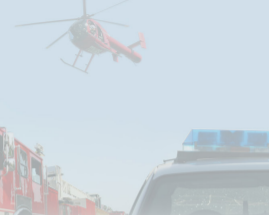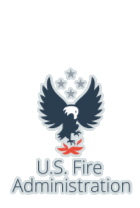|
Over the past several years, the National Institute of Standards and Technology (NIST) Public Safety Communications Research (PSCR) Division has been conducting a Usability and User Interface project assessing emergency responder communication technology needs through extensive interviews and surveys. NIST recently made the project’s entire data set available to the public, accessible and downloadable within a new web-based data visualization and analysis tool called the Usability Results Tool.
To date, the project has progressed through two phases.
Phase 1 consisted of a series of in-depth interviews with approximately 200 first responders on their views of communication technology. Findings from Phase 1 concluded that first and foremost, responders wanted their communication technology to be reliable. Their primary need for their communication technology was for solutions to their current problems, rather than development of new technology. Many were also interested in communication technology that can provide them with real-time information. Additionally, first responders wanted improved interoperability with other disciplines, agencies, and jurisdictions.
Phase 2 used the Phase 1 results to inform a nationwide survey of over 7,000 first responders within the 911/dispatch, emergency medical services (EMS), fire service, and law enforcement disciplines. The Phase 2 nationwide survey confirmed and expanded on the needs and problems related to communication technology identified in interviews during Phase 1.
The NIST PSCR Usability Team recently provided public access to the data from these interviews and surveys by creating the PSCR Usability Results Tool: Voices of First Responders. Over 20,000 first responder quotes from the first responder interview data, as well as the 7,182 survey responses are available within the tool.
The Usability Results Tool provides a means to analyze the survey results and create charts and tables dynamically based on filter selections. Survey results accessed via the Survey Results Tool, the Survey Analyzer Tool, and the interview quotes, available via the Interview Quotes Tool, can be freely used to influence the research, design and development of communication technology in the public safety domain. Any interview quotes or survey results used in published materials should properly attribute this tool as well as the appropriate reports.
NIST PSCR provided a review of the results from this multi-year research study, including an overview of the new Usability Results Tool, during its PSCR 2021: The Digital Experience virtual conference, held in June this year. NIST has posted the presentation slides and a video recording of this session on its website.
NIST PSCR has also published a series of reports interpreting and summarizing the results of this multi-year research study. To access NIST’s Voices of First Responders report series, visit NIST PSCR’s User Interface/ User Experience Publications page.
For more information about the NIST PSCR Usability Team research, or for questions regarding the PSCR Usability Results Tool, please send an email to usability@nist.gov. More information about the PSCR program can be found at pscr.gov.
(Source: NIST)
The impacts of climate change are being felt today in communities across the country and increasingly test community resilience. Exercises provide a forum for participants across the whole community to discuss and better understand climate change and plan for, adapt to and mitigate their risks and hazards.
Exercise scenarios, modeling and simulations tangibly represent how climate change will increase the need for resources while diminishing capabilities. Participation in exercises provides a common understanding of community risk; current and planned programs related to community resilience; and critical issues relevant to future community planning.
In November 2021, the Federal Emergency Management Agency (FEMA) released its Long-Term Community Resilience Exercise Resource Guide: Designing Whole Community Exercises to Prepare for the Effects of a Changing Climate. The Guide equips users with:
- A dictionary with common terms to ensure a shared understanding of climate-related terminology and principles before an exercise.
- Tools and templates for planning and conducting climate-focused exercises.
- Resources including funding opportunities, risk assessments and training programs.
Any jurisdiction, organization, network or regional coalition can use this Guide to continually improve its collective resilience, and the resilience of the community and nation, in the face of real and rising climate change vulnerabilities, threats and impacts.
The Guide offers the latest Homeland Security Exercise and Evaluation Program (HSEEP) guiding principles, new discussion prompts specific to climate change and social justice, and noteworthy resources from across the interagency.
The updated Guide is available for download on FEMA’s website and FEMA’s Preparedness Toolkit website, along with its companion resource of historical reference documents, consisting of a collection of historical Exercise Seminar Participant and Situation Manuals.
Please e-mail FEMA’s National Exercise Division at NEP@fema.dhs.gov with any questions or to share how you are using the Long-Term Community Resilience Exercise Resource Guide.
(Source: FEMA)
The use of unmanned aircraft systems (UAS), also known as drones, in firefighting operations is on the rise. Public safety agencies can use drones to support a wide variety of operations in structural and wildland firefighting, search and rescue, hazardous materials, natural disasters, active shooter events, and any response requiring increased situational awareness. However, public safety drone users are often operating with a lack of general knowledge, planning, and education that can result in accidents, injuries, life-saving operations delays, interference with other aircraft, and exposure to liability.
To address this need, the National fire Protection Association (NFPA) was awarded a Fire Prevention and Safety Grant in 2019 by the Federal Emergency Management Agency (FEMA), as part of its Assistance to Firefighters Grant (AFG) program. Through this initiative, the NFPA is providing training to responders, maintaining a database tracking fire service drone programs and usage, and building an online portal that agencies can use to ensure their drone programs are compliant with current regulations and standards.
As part of this AFG-funded project, in October 2021, the NFPA released a training program, entitled NFPA® Public Safety Drone Guide Online Training, to help fire departments across the United States improve existing public safety drone programs and establish new drone initiatives.
This free online training offers instruction and best practices for the proper administration, operation, and maintenance of a public safety drone program. The training is based on NFPA 2400, Standard for Small Unmanned Aircraft Systems (sUAS) Used for Public Safety Operations, as well as the Federal Aviation Administration's (FAA) Requirements (part 107, 91) and the Code of Federal Regulations — Aeronautics and Space (Title 14 CFR).
The training can be completed at your own pace but is estimated to take about 4 hours. It was custom-built by the NFPA with an intuitive web-based and mobile-friendly interface. Features of the training include gamified content, 360-degree video, immersive virtual reality (VR) tools including 3D simulations with the option to view using a mobile VR headset, and an “action planner,” allowing for documentation of answers to key questions as participants progress through the course.
In addition to the free training, in December 2021, the NFPA released its Drone Knowledgebase, which will promote information sharing and collaboration among U.S. public safety entities that have established drone programs and those seeking to form programs. The Drone Knowledgebase is expected to become more robust as fire departments learn about the resource, contribute local information, and invite neighboring jurisdictions to add their program details.
The NFPA has established a dedicated landing page, nfpa.org/drones, so that members of the fire service can access the 4-hour training, NFPA 2400, a training teaser video, research, related content, and the Knowledgebase in one convenient location.
(Source: NFPA)
|





